The surviving records of the Court of Common Pleas document civil litigation at common law between subjects from the late 12th to the late 19th century. Evidencing disputes over real property and debt, the 73 ‘CP’ series held at The National Archives are a rich resource for academic researchers, legal specialists, local historians, family historians and other user groups. For Catalogue Week, this blog takes readers behind the scenes of a recent project to accession an unsorted Common Pleas record series: CP 56, dating from 1562 to 1796.
Series CP 56 consists of 382 files of writs (‘brevia’ in Latin) relating to the levying of common recoveries, a means of transferring land or property by agreement. The accessioning of these records was completed in September 2022. As a result, every CP 56 file is now uniquely described in our online catalogue, Discovery, and the files are newly available to be ordered and consulted in the reading rooms by anyone wishing to search these hitherto unexplored writs for details of the parties and places they concern.
The unsorted CP 56 files, occupying 89 archival-quality boxes, presented several challenges to the cataloguer. The first of these was logistical. Series CP 56 ordinarily resides at The National Archives’ offsite storage facility: before listing work could commence, therefore, the records needed to be allocated a new, temporary storage location at our Kew site. Thanks are due to the colleagues in Document Services who freed up shelf space (no mean feat in our already well-stocked repositories!) for all the boxes to come on site at once.
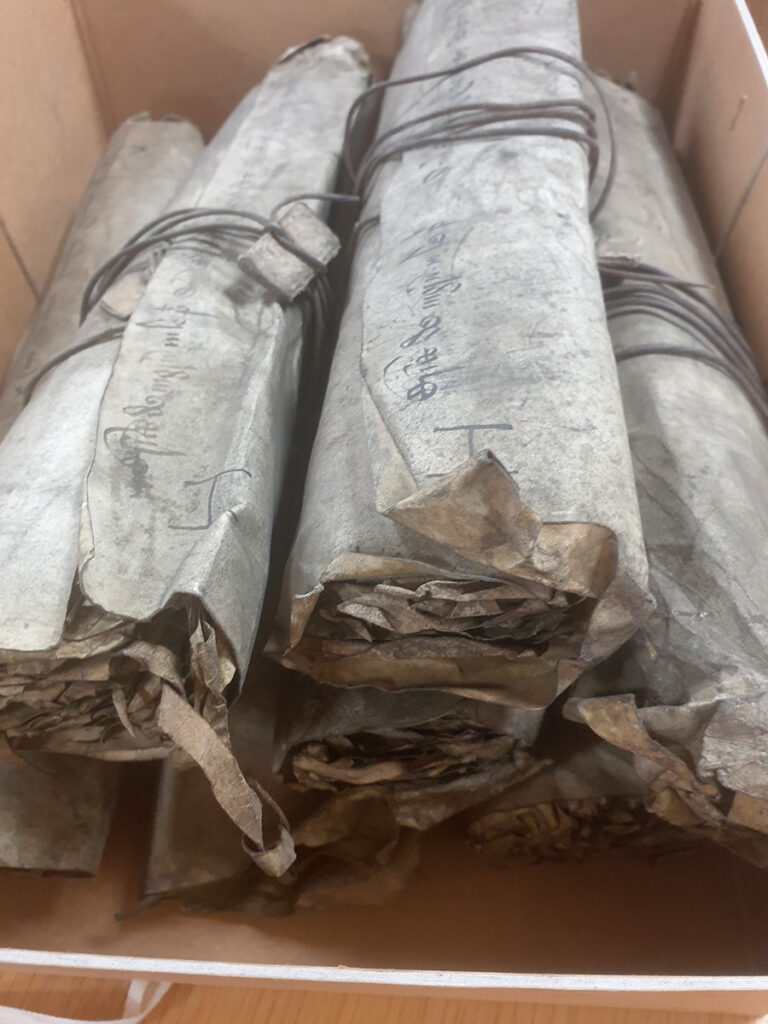
A further challenge was presented by the format and condition of the CP 56 records. Each file consists of dozens, sometimes hundreds, of writs all dating from a single law term (Michaelmas, Hilary, Easter or Trinity) in a given year. The early modern Common Pleas clerks would thread these writs together on a long thong, then enclose them within a parchment cover, winding the thong several times around the file to secure the cover in place.
Surviving for the most part in this original format, the CP 56 files must be handled with care. The thongs have become brittle over the centuries, and are liable to snap; and in the act of moving the top writs from the file along the thong, to access those beneath, these fragile documents can easily tear, particularly around the central hole where they are threaded together.
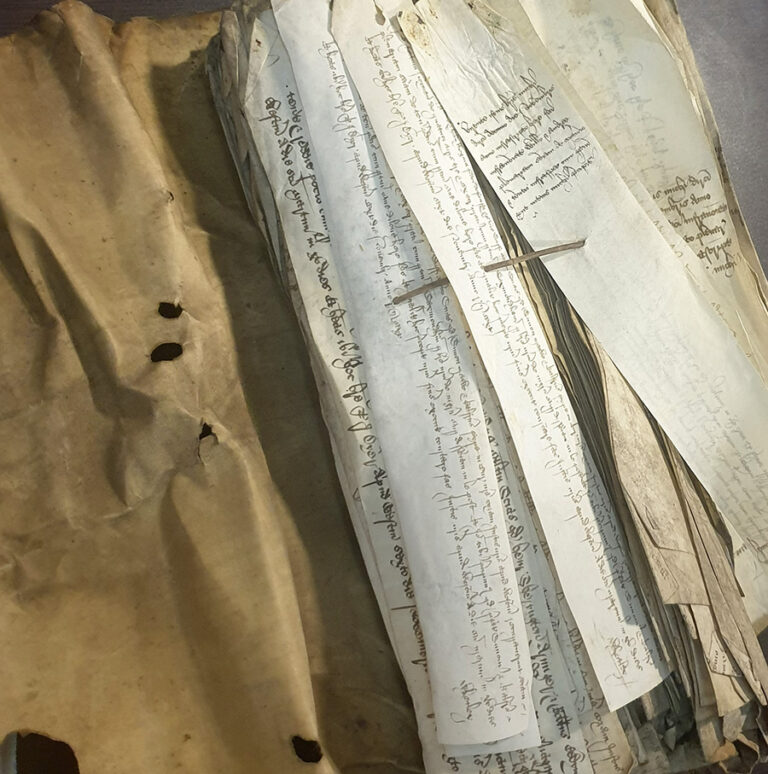
To reduce the risk of damage to these files during listing, handling advice was sought from expert colleagues in our Collection Care department at the outset of the project. Collection Care colleagues also provided nitrile gloves for handling the records, as the CP 56 files are particularly dusty and dirty: a legacy, perhaps, of their original storage conditions in the Court of Common Pleas. Thanks to the precautions outlined here, the records could be listed safely.
Several cases of historic damage were also revealed when the boxes were opened and their contents examined. Given the age of this series (the oldest records date from the beginning of Elizabeth I’s reign), some condition issues were to be expected. The ‘Physical condition’ field has been used to capture this information in the new CP 56 catalogue data.
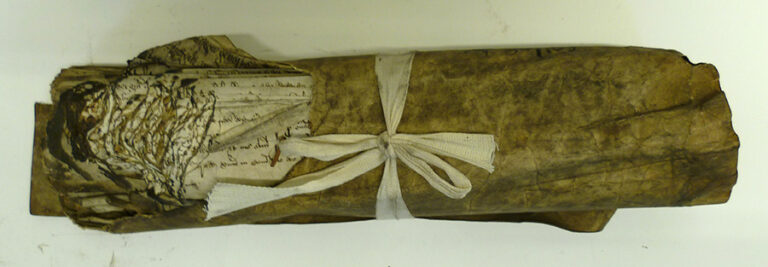
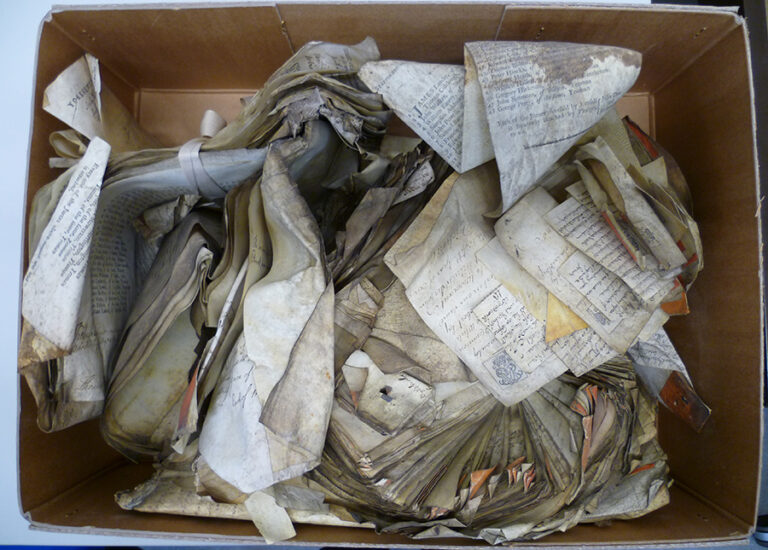
There were three consecutive phases to the preparation of brand-new catalogue data for the CP 56 files: (i) box listing; (ii) arrangement; and (iii) description.
At the box listing phase, a record specialist from the Collections Expertise and Engagement department advised on the information that needed to be captured from each file. A spreadsheet listing template was then created, in collaboration with colleagues from the Cataloguing, Taxonomy and Data department. The CP 56 files were then removed one by one from their boxes and listed in order of the provisional reference codes already pencilled on their covers. Once all 382 files had been listed, a decision could be made concerning their arrangement.
The original arrangement proved to be chronological up to file 353, after which the picture became a little more random, with records from the reigns of Elizabeth I, Charles I, Charles II and the first three King Georges all rubbing shoulders in the final eight boxes. It made sense to put the entire series in date order, with the ‘miscellanea’ at the end of the series inserted in their correct chronological positions, and the records re-numbered so that the references would mirror the chronological arrangement.
As a result, the earliest record in the series (Hilary term, 4 Elizabeth I) bears the reference CP 56/1, and the latest record (Michaelmas term, 37 George III) is numbered CP 56/382. This new arrangement enables users to navigate the series easily in Discovery, and to browse the records by date.
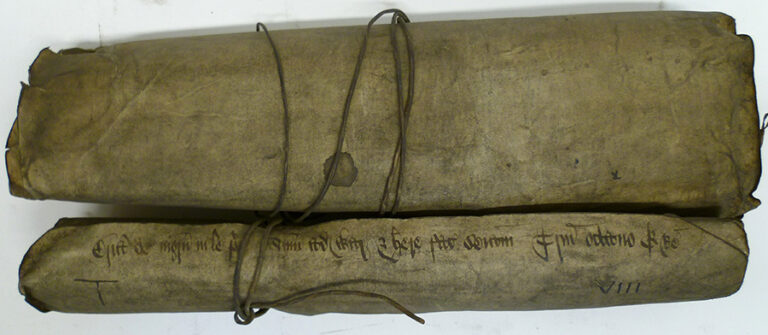
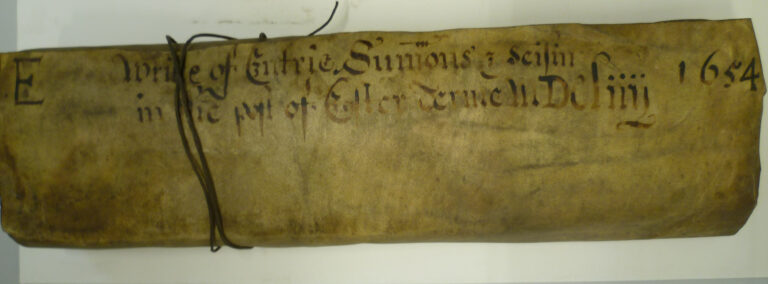
During the final, ‘description’ phase of the project, the information captured at listing was put in the order established during arrangement, to create 382 new catalogue descriptions for the previously unsorted files in series CP 56. These descriptions are now live on Discovery. The series title in Discovery, ‘Brevia de ingressionibus super disseisinam in le post…’, captures the text inscribed on the cover of each file, excepting any files dating from the Interregnum period and from 1751 onwards, whose title inscriptions (and contents) are in English rather than Latin.
The individual file descriptions capture two details from the file covers, which vary from file to file. These are: a capital H, E, T or M towards the left-hand edge, which denotes the legal term to which the writs relate (Hilary, Easter, Trinity, or Michaelmas); and a number denoting the year when the writs were produced. This will either be a Roman numeral indicating a regnal year, or a calendar year in the case of records dating from 1649-1660, when England was a republic.
Hopefully researchers will enjoy exploring the newly-accessible CP 56 writ files as much as I enjoyed sorting and cataloguing them. This was a collaborative effort from beginning to end: colleagues from Document Services, Collection Care, Accessions, Collections Expertise and Engagement, and Cataloguing, Taxonomy and Data were all key to its delivery. To those colleagues: many thanks. To our researchers: happy browsing!